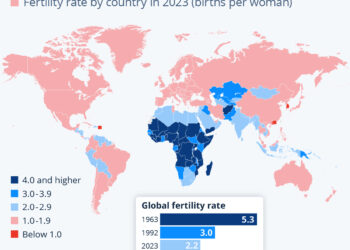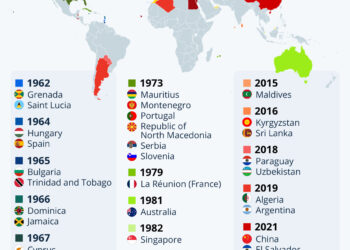The Dramatic Decline of Malaria Deaths in Southeast Asia
Malaria, a life-threatening disease caused by parasites transmitted to humans through the bites of infected female mosquitoes, has been a significant health concern in Southeast Asia for decades. However, recent data from the World Health Organization (WHO) reveal a remarkable decline in malaria-related deaths in the region between 2000 and 2023. This blog explores the trends, challenges, and responses surrounding malaria in Southeast Asia.
The Numbers Speak: A Significant Reduction in Malaria Deaths
Statistics that Matter
According to WHO data, malaria deaths in the Southeast Asia Region plummeted by over 80% from 2000 to 2023. The statistics reflect that 35,325 people lost their lives to malaria in 2000. By 2023, this number had dramatically decreased to 6,042 deaths, marking a profound achievement in public health efforts across the region.
Comparative Analysis with Global Statistics
On a global scale, malaria deaths also saw a decline. In 2023, approximately 597,000 people died from the disease, a reduction from 622,000 estimated deaths in 2020. Despite these improvements, the burden of malaria remains substantial, particularly in Africa, where the WHO African Region accounted for 95% of all estimated malaria deaths in 2023.
Countries Leading the Change: Indonesia and India
The Major Contributors to Mortality Rates
Among the countries in the Southeast Asia Region, Indonesia and India had the highest mortality figures in 2023. Together, they accounted for a staggering 5,337 malaria-related deaths. Understanding the dynamics within these specific countries is crucial for addressing malaria in the region effectively.
Public Health Response in Indonesia and India
Both Indonesia and India have implemented various strategies to combat malaria, including increased access to preventive measures such as insecticide-treated nets and effective antimalarial treatments. However, challenges remain in terms of reaching rural communities and managing drug resistance.
The Southeast Asia Region: A Diverse Health Landscape
A Closer Look at WHO’s Southeast Asia Region
The WHO Southeast Asia Region encompasses a wide array of countries, including those in both Southeast and South Asia. Each country faces unique challenges and opportunities in the fight against malaria, influenced by factors such as population density, geography, and healthcare infrastructure.
Variability in Malaria Transmission
Malaria transmission is not uniform across the region. Some areas experience higher transmission rates due to environmental conditions favorable to mosquito breeding, while others have successfully controlled the disease through robust public health interventions. This variability highlights the need for tailored strategies to address local epidemiological profiles.
Combating Malaria: Strategies and Innovations
Preventative Measures and Treatments
The significant decline in malaria mortality in Southeast Asia can be attributed to various interventions. Key strategies have included the distribution of insecticide-treated nets, indoor residual spraying, and availability of rapid diagnostic tests and effective antimalarial drugs.
Community Engagement and Education
Community engagement plays a vital role in malaria prevention. Public health campaigns focused on educating communities about malaria symptoms, prevention measures, and the importance of seeking treatment can lead to early diagnosis and better outcomes.
Ongoing Challenges in Malaria Control
Addressing Drug Resistance
Despite progress, one of the most pressing challenges in malaria control is the emergence of drug-resistant strains of the malaria parasite. Continued vigilance and research are essential to develop new treatments and ensure the effectiveness of existing drugs.
Environmental and Socioeconomic Factors
Environmental changes, such as urbanization and climate change, can significantly impact mosquito breeding patterns and malaria transmission. Additionally, socioeconomic factors, including poverty and limited access to healthcare, exacerbate the difficulties in controlling malaria.
The Need for Continued Investment
Sustaining the progress made in reducing malaria deaths requires ongoing investment in research, healthcare infrastructure, and community health initiatives. Governments and international organizations must collaborate to ensure that effective interventions remain accessible to those most at risk.
The Global Context of Malaria
Malaria Beyond Southeast Asia
While Southeast Asia has seen substantial progress, the global situation varies significantly, with the African Region bearing the brunt of malaria-related mortality. Addressing malaria as a global health issue necessitates a coordinated international response, sharing best practices from successful regions like Southeast Asia and learning from ongoing challenges in Africa.
The Role of Global Health Organizations
Organizations like WHO play a critical role in coordinating global efforts to combat malaria. Their research, guidelines, and support for national health programs are vital in shaping effective responses to this enduring public health challenge.
Future Directions in Malaria Research and Policy
Innovating for Better Outcomes
Future efforts must focus on innovation in malaria research, including vaccine development and novel vector control methods, to further reduce malaria incidence and mortality. Continued research is necessary to adapt strategies that address emerging challenges and shifting epidemiological patterns.
Building Resilience in Communities
Strengthening healthcare systems and enhancing community resilience against malaria is essential. Empowering local healthcare workers and providing communities with the tools they need to combat malaria can lead to sustainable improvements in health outcomes.
This in-depth exploration of malaria trends in Southeast Asia reveals significant progress in the battle against this deadly disease. As the region continues to innovate and adapt its strategies, the quest for a malaria-free future remains a realistic goal.






